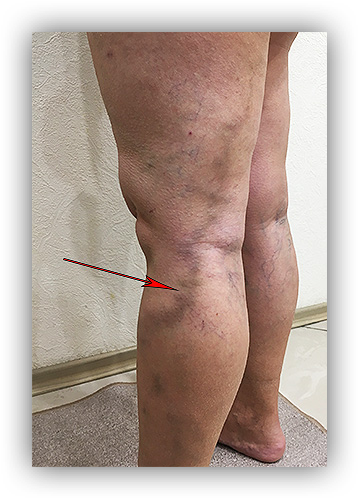- Varicose veins treatment in Kyiv
- Varicose veins treatment in Zaporizhzhia
- Edema and lymphostasis treatment
- Myths about varicose veins
- Massage and varicose veins
- Treatment of varicose veins with hydrogen peroxide
- Veins ache and pull blood vessels
- Can I treat varicose veins with pills?
- Treatment for varicose veins with leeches and bees. Benefit or harm?
- Is it possible to get rid of varicose veins with the help of gels and ointments?
- After 70 years, is it too late to treat varicose veins?
- Do mud baths help with varicose veins?
- Is it possible to get rid of varicose veins with compression knitwear?
- If you make an "open" operation - varicose veins will never appear again. Is it so?
- Are ugly scars and scars left after the operation to remove varicose veins?
- Is varicose veins treatment a long and painful process?
- Is it possible to get rid of varicose veins completely and forever?
- Varicose veins cannot be treated in the summer. Is it so?
- Do you need to go to a surgical hospital for vein surgery or not?
- After removal of varicose veins, the load on healthy veins increases. Is this so?
- Is it possible to play sports after surgery to remove varicose veins?
- Only the elderly suffer from varicose veins?
- Wearing compression hosiery causes muscle atrophy or not?
- Remove veins or not?
- How is the outflow of blood after vein removal?
- Thrombophlebitis treatment
- Nonresident patients
- All about varicose veins
- The risk of complications of varicose veins | Trophic ulcers and no panic
- Causes and symptoms of varicose veins
- Diagnosis of varicose veins
- Stage of development of varicose veins
- Gymnastics and prevention of varicose veins
- Diet for varicose veins
- Why is varicose veins dangerous?
- Treatment of varicose veins of the lower extremities
- Varicose veins and pregnancy
- Varicose disease - what will happen if not treated?
- Varicose symptoms
- Complications of endovenous treatments
- Post-thrombotic disease
- What is phlebology?
- Complications of varicose veins
- All about sclerotherapy
- Vascular diseases
- Treatment results in AngioLife
- Questionnaires and tests for patients and doctors
- For doctots
- Public contract
Sclerotherapy Complications
- Home
- All information about sclerotherapy
- Sclerotherapy Complications

Quite often, our patients ask a question: are there any complications after sclerotherapy procedures and how often? - Yes, there are quite often, but most of the complications are not serious and disappear in a short time. Next, we will tell you about the most common complications after sclerotherapy:
Pain (found in 50% of cases) and pain in venous sclerosis, a fairly common complication, most often manifested in the evening and night after the procedure. This is due to slight perifocal inflammation around the sclerotic vein. The pain syndrome is easily stopped by walking or taking NSAIDs (paracetamol). Extremely rare is a prolonged pain syndrome, more than 1-2 days.

Bruises, ecchymoses and hematomas (occur in 30%-40% of patients) are formed at the sites of sclerosant injections as a result of blood entering outside the vein, either due to a violation of the compression regime, or as a result of the individual characteristics of the skin and the homorheological properties of the patient’s blood. These manifestations disappear within 7-20 days without any specific treatment; using heparin-based ointments it is possible to speed up the process of “resorption of bruises” up to 7-10 days.
Edema (occurs in 30% of cases) often occurs with sclerosis of large veins below the knee joint and / or inadequate compression therapy. Edema syndrome resolves on its own within 1-2 days, subject to all recommendations.


Hyperpigmentation (found in 30-50% of cases) is the appearance of dark traces along the sclerotized veins and at the injection sites of sclerosant. This is due to the impregnation of the skin with hemosiderin, a dark yellow pigment that is formed as a result of the dissolution of the coagula formed inside the vein after the procedure. In most patients, hyperpigmentation disappears completely in the period from 3 weeks to 6 months. However, in 5% of cases, hyperpigmentation can persist up to 1-2 years.
Matting (skin matting) or “vascular haze” (noted in 20-30% of cases) is the appearance of a dark gray “halo” around sclerotic veins or the formation of small telangiectasias. Skin matting occurs as a result of a significant increase in regional venous pressure in places of sclerotic veins. In most cases, the "vascular haze" disappears in the period from 1 to 12 months. In 0.5% of cases, matting remains forever.
Transient blindness (from 0.01 to 0.2% of cases) is a transient violation of the visual analyzer lasting less than 2 hours. The development mechanism is not well understood and is unlikely to cause serious concern; it goes away on its own.
 Skin necrosis and ulceration (found in 0.2% of cases) is an extremely rare complication that occurs with individual intolerance to the drug, or after the introduction of a sclerosant under the skin (past a vein). In rare cases, skin necrosis and ulceration can occur if the compression regimen is not observed.
Skin necrosis and ulceration (found in 0.2% of cases) is an extremely rare complication that occurs with individual intolerance to the drug, or after the introduction of a sclerosant under the skin (past a vein). In rare cases, skin necrosis and ulceration can occur if the compression regimen is not observed.
Allergic reactions (from 0.01 to 0.2%) - a reaction of the body's hypersensitivity to the introduction of sclerosant, is extremely rare. In most cases, it is asymptomatic, in rare cases it requires the use of resuscitation measures.
Paresthesia (from 0.1 to 0.2%) is numbness or decreased sensitivity in places of sclerotherapy, the cause of which is the effect of sclerosant on the sensory nerves. Treatment does not require passes independently in the period up to 2-3 months.
Deep vein thrombosis (less than 0.01%) the formation of blood clots in the deep veins of the lower extremities. An extremely rare complication after sclerotherapy, the literature describes isolated cases of DVT after scleroobliteration of the trunks of the large and small saphenous veins.
In conclusion, I would like to note that it is not possible to predict 100% how the patient's skin will respond to sclerotherapy. As a rule, after the first session of sclerotherapy, it is possible to predict local changes in the skin and the timing of obtaining the desired, cosmetic treatment result. Sclerotherapy is an effective, non-surgical method for treating varicose veins, but only in “experienced hands”.
You can find the results of sclerotherapy in the AngioLife vascular center here.
- How quickly will the result be after sclerotherapy?
The result of sclerotherapy depends on many factors, namely: the number of veins that need to be removed, the number of sclero sessions, the skill and skills of the phlebologist, as well as the patient’s compliance with all the doctor’s recommendations. In most cases, the final effect after sclerotherapy is noticeable within 1-3 months after treatment. However, there are times when it is necessary to wait a longer period. - What are contraindications for sclerotherapy?
Contraindications to sclerotherapy include the following:
- Allergic reaction to the substance used: Some patients may be allergic to the drugs injected in sclerotherapy.
- Pregnancy and lactation: Sclerotherapy is not recommended for pregnant and lactating women, as the safety of the procedure for the fetus or infant may not be well studied.
- Thrombophlebitis and venous thrombosis: Patients with active inflammatory processes in the veins.
- Cardiovascular disease: Patients with serious cardiovascular disease may be at increased risk of complications during the procedure.
- Previous allergic reactions: Patients who have previously experienced allergic reactions to similar procedures or medications.
- Infections and inflammation at the injection site: The procedure should be postponed if there is an infection or inflammation at the injection site.
- Exacerbation of chronic diseases.
When performing sclerotherapy, it is important to consult with a qualified specialist who will assess the individual characteristics of the patient and apply the procedure in accordance with recommendations and safe practices.
Get a consultation in AngioLife right now
- ANGIOLIFE at the UVS Congress - Sukharev Readings 2025
- Diagnosis, clinical and treatment of varicose veins
- Thromboangiitis obliterans, Buerger's disease and Endarteritis
- Тромбофлебіт та тромбоз поверхневих вен
- ANGIOLIFE on aspects of phlebology 2024
- Is it possible to treat deep vein thrombosis without anticoagulant therapy?
- UVS 2024 CONGRESS "SUKHAREV READINGS"
- Varicose veins
about services by phone
